- MOE
- National Parks of Japan
- Yakushima (Island) National Park
- Characteristics
main body
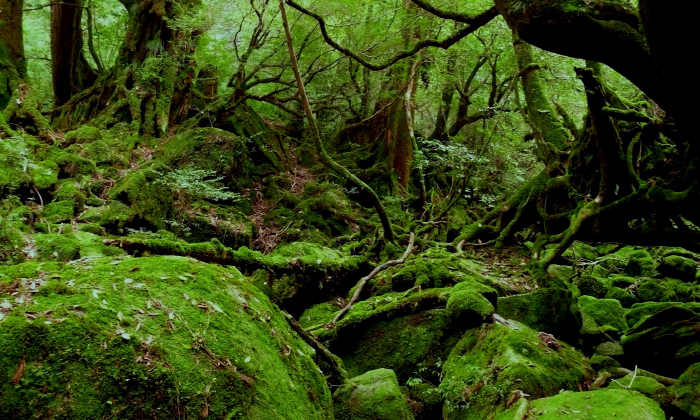
Characteristics
Japan's finest mountainous island where giant trees over 1,000 years old grow and a volcanic island teeming with life nurtured by the heat of earth and the raging waves.
Date of Designation: March 16, 2012
Area: 24,566 ha (land area)
Related Prefecture: Kagoshima
Area: 24,566 ha (land area)
Related Prefecture: Kagoshima
Yakushima Island and Kuchinoerabu-jima Island framed Yakushima National Park and are located on the bountiful sea where the Japan Current flows. Even though the distance between the islands is only 12 km, they were created from different processes and have very different natural landscapes.
Yakushima Island has a steep terrain with mountains of the highest peaks in Kyushu along with remarkable natural landscapes of the forest with giant trees like Japanese cedars over 1,000 years old. The natural beauty of the island is recognized as an outstanding universal value of the World Heritage.
On the other hand, Kuchinoerabu-jima Island is the largest volcanic island among the Satsunan Islands where fumaroles activities continue. The eastern part of the island exhibits volcanic landscapes while the coastal region maintains unique natural landscapes with coastal cliffs and sea caves eroded by strong wave action. Additionally, although it is a volcanic island, it is covered with rich vegetation, and endemic species not found on Yakushima Island, like the Erabu flying fox, can be seen.
Yakushima Island has a steep terrain with mountains of the highest peaks in Kyushu along with remarkable natural landscapes of the forest with giant trees like Japanese cedars over 1,000 years old. The natural beauty of the island is recognized as an outstanding universal value of the World Heritage.
On the other hand, Kuchinoerabu-jima Island is the largest volcanic island among the Satsunan Islands where fumaroles activities continue. The eastern part of the island exhibits volcanic landscapes while the coastal region maintains unique natural landscapes with coastal cliffs and sea caves eroded by strong wave action. Additionally, although it is a volcanic island, it is covered with rich vegetation, and endemic species not found on Yakushima Island, like the Erabu flying fox, can be seen.
Terrain/ Scenery
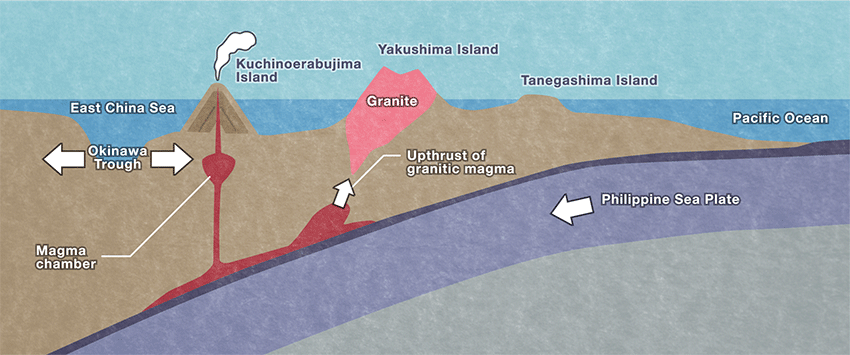
The magma chamber that formed under bottom of the ocean solidified into granite, then the granite thrust upward faster than erosion by wind and rain, and finally became the mountainous Yakushima Island.

A Ridgeline with Exposed Granite
Therefore, there are anomalous landscapes with huge and odd-shaped granite rocks affected by erosion and weathering around the peaks of the mountains. In addition, the island receives a lot of rainfall due to its towering mountains and the warm, humid air brought by the Japan Current.
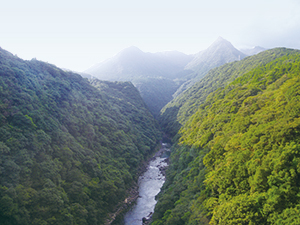
V-shaped Valley of Anbo River
As a result, a number of rivers and falls can be seen on the island and some of them have made the V-shaped valley while curving the solid rock of granite.
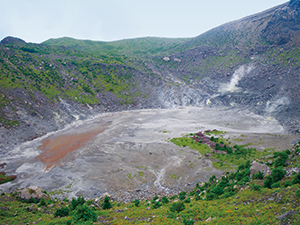
The Crater of Mt. Furu-dake
On the other hand, Kuchinoerabu-jima Island is a volcanic island with active fumaroles, and it is believed that the island is an aggregation of 10 different volcanoes. Even though the western part of the island is an old volcano, the eastern part of the island is relatively new. Visitors can see the dynamic landscapes of volcanoes that are not seen on Yakushima Island.
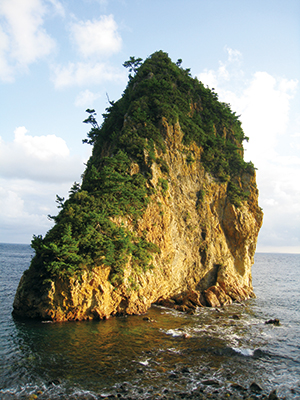
Nemachi-no Tategami
There are also unique landscapes with cliffs and huge rocks spread along the coast where most of the region remains natural.
Plants
Vertical Distribution
Yakushima Island has mountains whose height is over 1,800 m and the climate of the area around those peaks is similar to that of Sapporo in Hokkaido. Therefore, a variety of vegetation from the subtropical zone to the cool temperate zone depending on elevation can be seen on the island.The area up to 800 m is the laurel forest zone. Subtropical trees are also found near the coastline, and species of chinquapin and laurel dominate the area slightly higher than that. In a much higher elevation, the area between 800 m to around 1,600 m is covered with mixed needleleaf and broadleaf forests. The area above the tree line at 1,600 m becomes a shrub zone under the effect of strong winds. The area above 1,800 m is grassland of dwarf bamboo. As just described, the distribution of different vegetation depending on elevation is called the vertical distribution of vegetation, and the ecosystem of the island where such vegetation remains is recognized as an outstanding universal value of the World Heritage.
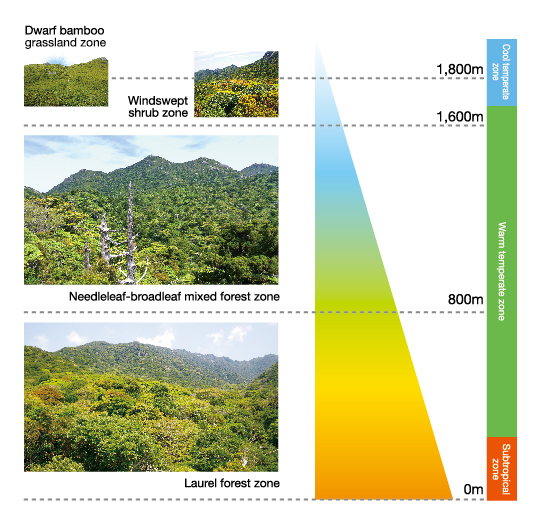
Natural Forests Encompassing Giant Trees
Japanese cedars are endemic species that grow wild only in Japan, while areas where you can see natural forests of Japanese cedars are limited within Japan. Moreover, although the age of Japanese cedars are supposed to be 500 years in general, trees more than 1,000 years old exist only on Yakushima Island.The natural forest of the island nurtures Yakusugi (cedar over 1,000 years) and is extremely valuable worldwide.
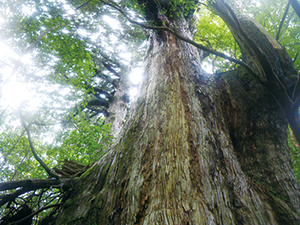
Towering Yakusugi in the Forest
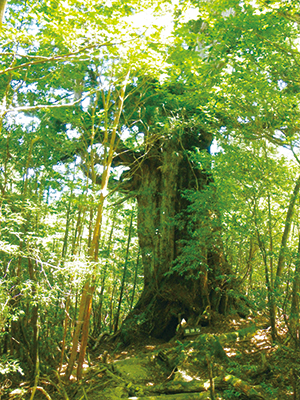
Ryujin-sugi Cedar
Endemic Species/Rare Species
Yakushima Island has an ecosystem of abundant rainfall along with the high elevations, so there are diverse types of plants, such as seed plants including alpine plants and orchids, pteridophytes, and bryophytes.
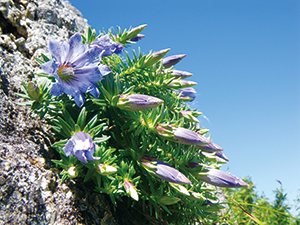
Gentiana yakushimensis
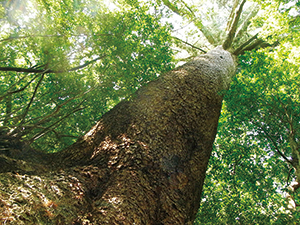
Yakutanegoyo (Amami Pine)
Moreover, there are 94 endemic species, such as Gentiana yakushimensis on the island.
On the other hand, Galeola altissima, which is rarely found on Yakushima Island, can be found on Kuchinoerabu-jima Island.
On the other hand, Galeola altissima, which is rarely found on Yakushima Island, can be found on Kuchinoerabu-jima Island.
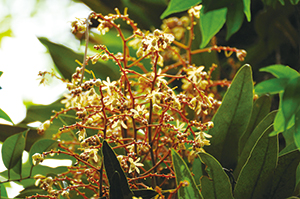
Galeola altissima
Wildlife
However, the fauna on Yakushima Island is not significantly different from that of the Honshu region-the island is the southern limit of distribution of many animals. Endemic species and subspecies of animals can be seen on the island since it was separated from the Kyushu mainland about 15,000 years ago.
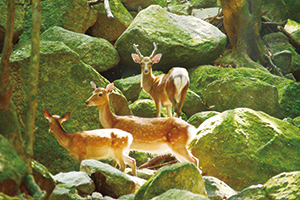
Yakushika (subspecies of sika deer)
The fauna of the island consist of 16 species of mammals including yakushika (subspecies of sika deer) and yakushimazaru (subspecies of the Japanese macaque), 167 birds, 15 reptiles, and 8 amphibians.
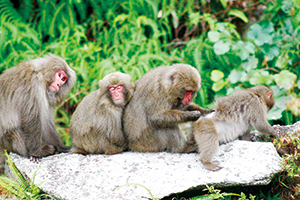
Yakushimazaru (subspecies of Japanese macaque)
Most importantly, Yakushima Island is a major spawning ground for loggerhead turtles. The annual number of spawning loggerhead turtles on the island account for nearly half the total number in Japan.
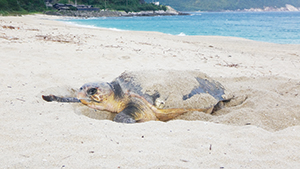
Loggerhead Turtle
The fauna of Kuchinoerabujima Island is different from that of Yakushima Island. The fauna of the island consists of 12 species of mammals, including the Erabu flying fox, which is designated as a Natural Monument, 48 birds, and 5 reptiles including the Erabu black-banded sea krait. In addition, there are diverse marine species with more than 1,000 fishes and 700 shellfishes in the seas around Yakushima Island and Kuchinoerabujima Island.
Culture
People on Yakushima Island call their villages Sato (community area), and the mountains seen from the sato are called Mae-dake (frontal mountains). The mountains that cannot be seen from the sato because they are shielded by the Mae-dake are called Oku-dake (back mountains). Oku-dake are regarded as divine areas, whereas Mae-dake are regarded as the area for gods and people.
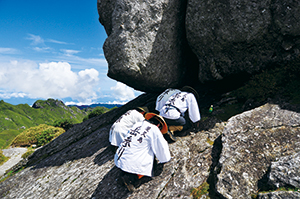
Take-mairi
Local events are based on the islander's perspective of nature. The traditional event called Takemairi (kind of mountain worship), which has been inherited by each village from nearly 500 years ago, is a good example. In the event, people visit the small stone shrine on the peaks of Oku-dake or Mae-dake to pray for prosperity, big catches, and good harvests for the village.

Ushidoko Moisho
The special event is held in almost all the villages on the island, and the mountains, seasons, and customs of visiting are different in each village. At the Ushidoko Moisho located in Miyanoura Village, you can see a number of old stone pagodas placed there by people from previous Takemairi events.
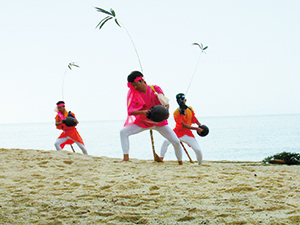
Kame-jyo Odori
Additionally, in Nagata Village near Nagata Beach known as a spawning site for sea turtles, there is a performing folk art called Kame-jyo Odori (Turtle Woman Dance). The motion of the dance is said to imitate the behaviors of spawning sea turtles from landing to returning to the sea and it has been handed down with the wish for the village's prosperity and the safety of the people in the village.
As just described, unique cultures closely related to the nature of the island remain on the island.
